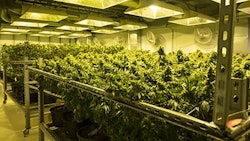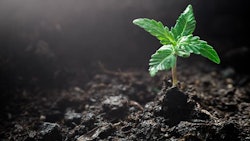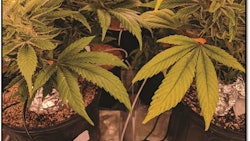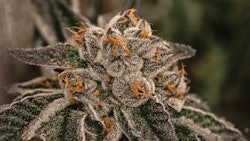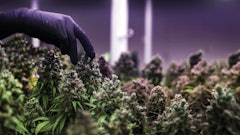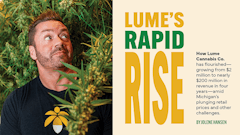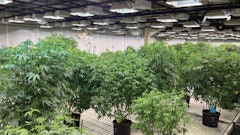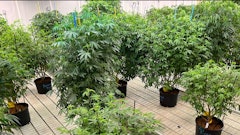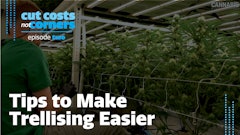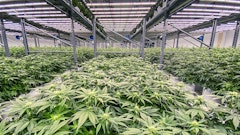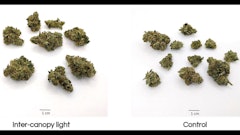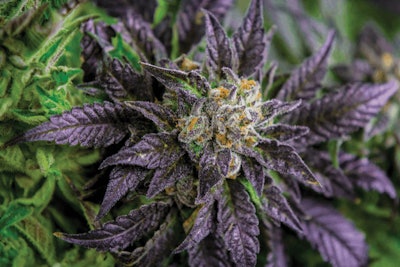
As the cannabis industry matures, I believe commercial cultivation likely will bifurcate in two directions: Indoor and greenhouse growers, due to higher production costs, will cultivate cannabis for high-THC and specialty flower markets, while outdoor growers largely will focus on large-scale production of plant biomass. Selecting genetics appropriate for each market and growing situation will ensure a cost-effective production program and help position cannabis businesses to remain competitive in the future.
Blindly selecting cannabis varieties and plugging them into any grow environment can result in inefficient cultivation programs. If the genetics are not an appropriate fit, growers will spend more money than necessary on manual labor, material inputs and environmental control as they try to make these varieties work in less-than-ideal conditions. A poor genetic fit could also lead to increased losses from insect and disease infestations, challenges in automating production, and unnecessarily high energy consumption.
The first of this two-part series will explore how growers can ensure an efficient and profitable cultivation business by selecting genetics that are appropriate for indoor and greenhouse environments.
Indoor
Indoor growers can provide optimum growing conditions throughout the entire life cycle of the crop. Through the manipulation of light levels, temperature, humidity, airflow and carbon dioxide (CO2) levels, indoor growers can create an environment that allows the plant to realize its full potential in terms of yield and active pharmaceutical ingredients (APIs). Cannabinoids (such as THC, CBD, and CBG), as well as terpenes (the aromatic molecules naturally produced by the plant that impart distinct flavors and aromas, like myrcene, limonene and pinene) are examples of cannabis APIs. Indoor growers have the luxury of customizing the cultivation environment to the ideal conditions for each variety to encourage maximum API production.
Not every variety is appropriate for an indoor facility. Indoor growing is the most expensive method of cannabis cultivation. (Cannabis Business Times’ “2020 State of the Cannabis Cultivation Industry Report” found that the median response (the response where equal numbers of research participants reported higher numbers and lower numbers) to the question asking “What is your average cost to grow a pound of cannabis?” was $396 for indoor cultivators, compared to $233 for greenhouse operators and $100 for outdoor farmers). So the variety grown should reflect this elevated production cost and command a premium price at retail. Indoor-grown cannabis should be destined for the “top shelf” in a dispensary, or for use in premium extraction products where starter material must be of the highest quality.
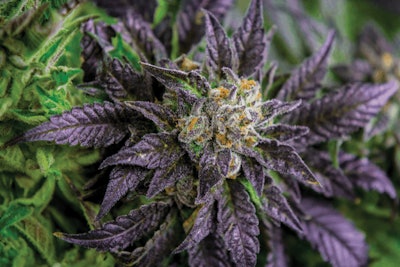
‘Attractive’ Chemical Profiles
Consumers who buy top-shelf cannabis, especially in adult-use markets, want something special. The visual appeal, taste, and aroma of a cannabis flower can greatly influence a customer’s purchasing decision at retail. With this in mind, indoor growers should cultivate varieties that help their product stand out from the rest of the options in the display case.
One focus should be on a variety’s terpene profile. The unique mix of terpenes within each variety can create flavor profiles that range from floral and citrus to chocolate and diesel fuel. Depending on the market and consumer preferences, uncommon terpene profiles can place a grower’s product in great demand.
Other natural compounds within the plant can greatly influence a variety’s appeal at retail. Flavonoids are phytonutrients that can impart pink, red or purple hues to cannabis, and because these colors are uncommon in the cannabis world, varieties that exhibit these colors can demand a higher price point at retail, depending on the consumer preferences in a particular market. Anthocyanins are flavonoids that are responsible for the bluish-purple color of crops like eggplant and blueberries, and their presence in cannabis results in purple flowers. (See the photo above.) Indoor growers can lower finishing temperatures at the end of a crop cycle to accentuate the purple color through increased anthocyanin production. The ability to run a cooler grow room also may preserve the integrity of the terpene molecules, which are volatile at higher temperatures.
Although most cannabis varieties max out around 25% THC per weight of dry flower, some varieties break 30%. The analytical method and credibility of the lab testing the flower can greatly influence the reported THC content, but cannabis that surpasses 30% THC is rare and will command some of the highest prices in the industry, due to consumers’ and patients’ known interest with high THC.
Varieties with unique flavors, appearances and high THC content are appropriate selections for indoor cultivators and can help justify the high capital expenditures (CapEx) and operating expenditures (OpEx) required to operate these facilities.
Operational Efficiency
Indoor commercial cultivators should anticipate increasing pressure to control their facility’s electrical consumption. Massachusetts, for example, limits electrical consumption for indoor growers to 36 to 50 watts per square foot of cultivation space, depending on the operation’s tier classification. In addition to utilizing more energy-efficient grow lights, indoor cultivators can investigate cannabis varieties that don’t require as much light to grow. This may seem counterintuitive because most growers would agree that more light results in greater yields. However, some cannabis varieties actually thrive on less light because they or their genetic ancestors originate from parts of the world that do not experience intense sunlight year-round. As a result, these plants evolved to thrive on much lower light levels than their sun-loving relatives from other parts of the globe. Hunting for low-light varieties that thrive on just 700 to 800 micromoles in flower, when most indoor grow sites I’ve come across provide more than 1,000, will help cultivators lower their energy demand for lighting, cooling and dehumidifying their indoor operations.
Varieties that also do well with less fertilizer have the potential to help indoor growers lower their production costs. As with lighting, many growers think that more fertilizer results in larger, more vigorous growing plants. This isn’t always the case. In an interview, Douglas Klier, founder and chief research officer at Integrated Genetics and Biopharma Research, a cannabis R&D company based in Leicester, Mass., said, “Instead of trying to feed a plant into an Olympian, start with genetics that lend themselves to becoming an Olympic athlete.”
By placing a heavier reliance on genetics instead of light and fertilizer, growers may be surprised at how little they spend on feeding their plants. Klier’s pheno hunting and breeding projects aim to reduce the cost of fertilizer and supplements to just 12 cents per plant for a 5-month crop cycle (from seed to harvest). Even finding a variety that can grow and flower at an electrical conductivity (EC) level of 1.5 instead of 2.5 will result in less fertilizer use and substantial savings.
A Compact Growth Habit
A plant’s size at harvest is directly influenced by its genetic makeup and the time spent in the vegetative growth phase. Growers can control how much time they allow their plants to size up during vegetative growth, and they can prune, pinch and de-leaf a plant to control its shape and size as it matures. However, the cultivation process is more efficient and profitable if the grower begins with plants that exhibit a naturally compact growth habit because it can be very expensive to grow a huge plant in an indoor facility. Most indoor crops are grown on benches that are at least 2 feet tall, and each grow room has a fixed ceiling height. Tall crops can grow into lights, causing plants to burn from the lights’ heat or “bleach” from the intensity, and tall plants can make it difficult for employees to regularly scout for pest or disease problems. Lopping off the top of a vigorously growing plant during the vegetative stage is an effective form of height control, but the lateral growth that explodes as a result can require frequent pruning and training to keep it under control.
Indoor growers can skip the trouble and save labor by growing naturally compact plants. A crop that finishes the growth cycle at 35 to 40 inches tall without much training or pruning is ideal for most indoor grow environments. Including the grow bench, that equals a finishing height between 5 and 6 feet, the average height of most cultivation employees. When hunting for compact varieties, search for indica-dominant plants that typically exhibit shorter, more stout growth habits than the notoriously stretchy sativas.
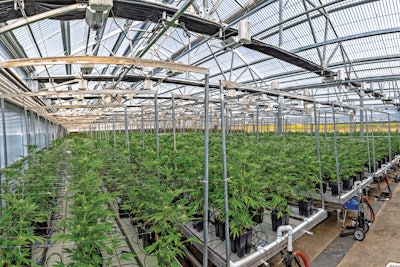
Greenhouse
Growers will want to keep the following in mind as they hunt for genetics appropriate for year-round greenhouse cultivation.
Look to the Equator
Unlike indoor growers, greenhouse cultivators have free light (the sun!) at their disposal, and they should consider populating their facilities with varieties that thrive under these conditions. Genetics from equatorial regions work well in high-light growing environments like glass greenhouses in regions with a high number of sunny days like Nevada or California, where light levels can push 2,000 micromoles on a sunny day. Colombian, Jamaican or Thai varieties or crosses thereof generally fare well under constantly sunny greenhouse conditions.
Equatorial varieties also are less likely to turn hermaphrodite under adverse conditions. This is a particularly important characteristic to have in the greenhouse, where grow facilities typically are much larger than indoor ones, making scouting for hermaphrodites challenging. High temperatures or brief periods of drought can trigger sensitive varieties to turn hermaphrodite and begin producing pollen. A few renegade male flowers can pollinate hundreds of female plants, and most growers won’t know that this has occurred until seeds begin to form.
Shorter Flowering Cycles Generally Are More Profitable
Although genetics that originate from equatorial regions are excellent candidates for greenhouse cultivation, they can take four months or longer to finish flowering. The cultivator will not be able to recoup the operational expenses of an extra-long flowering period when it comes time to sell their crop. Not many customers are willing to pay twice as much for a cannabis flower that took the cultivator twice as long to grow. Long-flowering varieties are fun to grow as a hobby, but commercial greenhouses should steer clear of anything that takes longer than 10 weeks to finish flowering.
However, an equatorial variety crossed with a short flowering variety can be a powerful combination for greenhouse growers. Like indoor growers, greenhouse growers have equipment and technology to create a consistent growing environment inside the greenhouse, regardless of the weather outside. Days can be lengthened with grow lights or shortened with blackout curtains, and heating or cooling systems help maintain ideal growing temperatures both day and night. Shorter flowering varieties allow the cultivator more harvests per year, and thus, more revenue. Greenhouses that have dedicated areas for flowering can realize up to six harvests per year by growing short-flowering varieties.
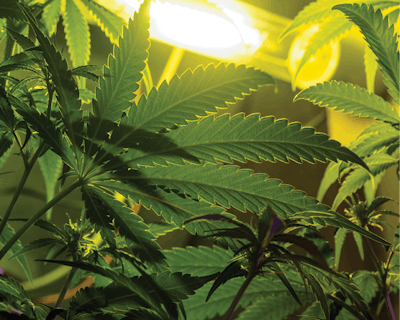
Seek Resistance to Powdery Mildew
Controlling powdery mildew is challenging in any grow environment, but greenhouse production presents a special challenge that indoor growers typically don’t face. During certain seasons and in different regions of the country, the differential between high day temperatures and low night temperatures can cause micro-condensation on the leaf surface, providing the ideal environment for powdery mildew spores to germinate. Greenhouse growers in arid environments like southern California, Arizona and New Mexico can face brief periods of high humidity within the plant canopy, providing just enough moisture for spores to germinate. Once the sun comes out and ventilation picks up, the spores are dispersed throughout the greenhouse. If this cycle continues, more than 50% of the greenhouse may show signs of powdery mildew infection within one week. I’ve seen this very scenario play out in multiple grows on which I’ve consulted.
Greenhouse growers should seek varieties that demonstrate resistance to powdery mildew. Although complete resistance is unlikely, certain cannabis varieties exhibit decreased susceptibility to the disease, thereby delaying the onset of the infection and minimizing damage to the crop. One characteristic growers should look for is a waxier leaf surface. Plants that naturally exhibit a tougher leaf surface are more difficult for pathogens to latch on to and penetrate. This delayed onset may just be enough to help the grower keep a disease outbreak under control until the crop is harvested. Many growers use silica additives to toughen the leaf surface for this same reason, so a variety that shows powdery mildew resistance plus a regular silica feeding program could go a long way toward creating a disease-free greenhouse.
Growing in a controlled environment means you have fewer unknowns and less variability for which to account. Having information about the environmental conditions makes selecting genetics a bit easier, although many pitfalls are possible.









